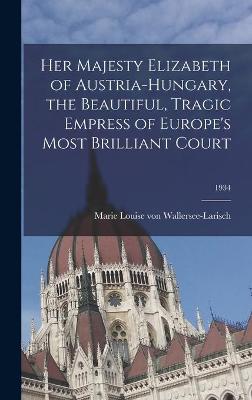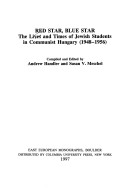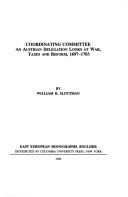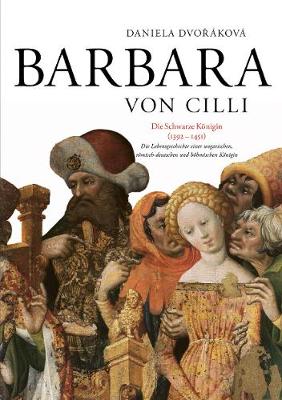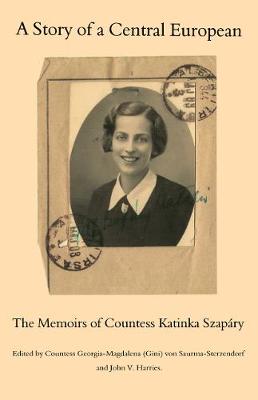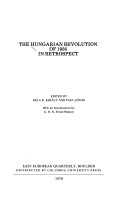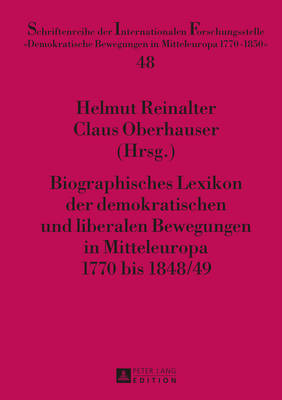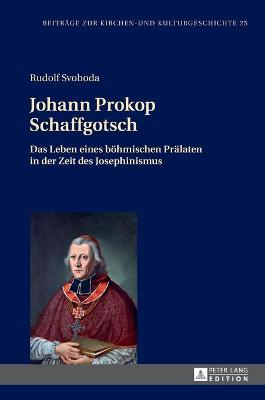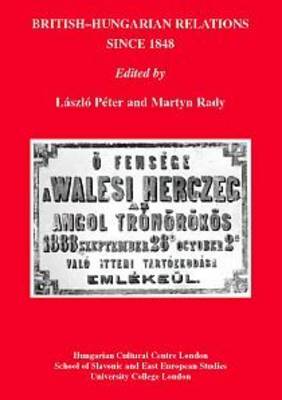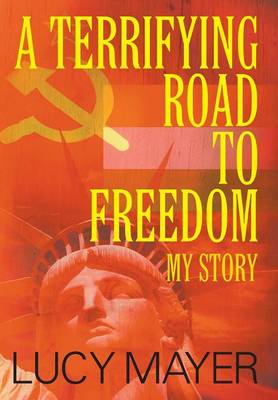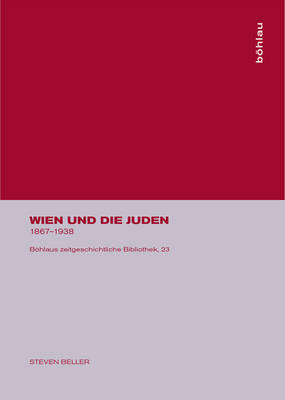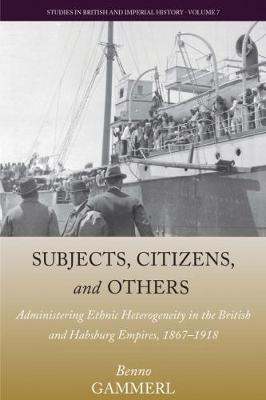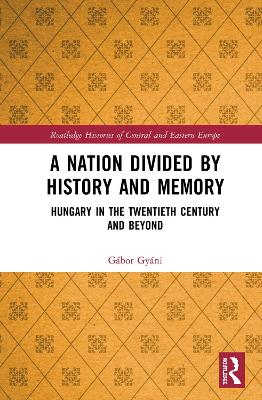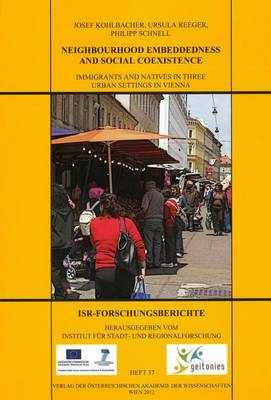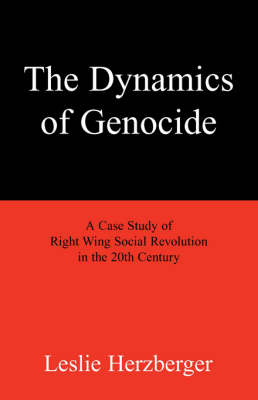Im Wiener Gebarhaus wurden in den Jahren 1816 bis 1868 mehr als 2500 judische Kinder zwangsgetauft und von ihren judischen Muttern getrennt. Bis 1843 bekamen die Kinder auch andere Namen, welche zum Teil durch Initialen verschlusselt wurden, andere kamen namenlos ins Findelhaus. Nur 20% dieser Kinder haben uberlebt. Wollte eine judische Mutter ihr Kind sehen, so hatte sie bis 1861 ihren Taufschein vorzuweisen. In diesem Buch geht es um Unterschichten, um judische Unterschichten. Die Mutter die...
Her Majesty Elizabeth of Austria-Hungary, the Beautiful, Tragic Empress of Europe's Most Brilliant Court; 1934
Red Star, Blue Star (East European Monographs S., v.487)
by Andrew Handler and Susan V. Meschel
This text traces the evolution of Communism in post-war Hungary. It identifies the distinctive features of the Jewish community and describes the relationship of the Communist authorities and the Jewish leadership, pinpointing the difficulties of Jewish students in all walks of life. The second part of the book contains the recollections of 17 people, all Holocaust survivors, who faced the threat of Communism in Hungary. These contributors managed to preserve freedom of speech and action, as wel...
Coordinating Committee (East European Monographs S., v.524)
by William B. Slottman
This study, better known as the "Deputatio", is that of the institution established by Emperor Leopold toward the end of the Austro-Turkish War (1683-1699) to coordinate procedures designed to raise financial support for the war from the monarchy. Since the "Deputatio" dealt also with numerous other problems affecting the empire, this book is also a fundamental analysis of the institutional and political problems of "fin de siecle" Habsburg monarchy.
Barbara Von CILLI: Die Schwarze Koenigin (1392-1451) (Spectrum Slovakia, #11)
by Daniela Dvorakova
Nur selten erlitt eine mittelalterliche Frauengestalt seitens der Schriftsteller und Historiker soviel Unrecht und ging mit solch schlechtem Ruf wie Koenigin Barbara von Cilli in die Geschichte ein. In der Literatur wird Barbara seit mehreren Jahrhunderten systematisch geschmaht. Die ersten Werke, die ein negatives Bild uber sie verbreiteten, entstanden schon in der Zeit ihres Todes oder sogar noch wahrend ihres Lebens, und sie ging als Schwarze Koenigin oder Deutsche Messalina ins historische...
The author, Countess Katinka Szapary, recalls the 1920s and 1930s when she was growing up in rural Hungary, her experiences of the Second World War, (particularly the Russian occupation of eastern Europe), and her post-war experiences when she was employed as a translator by the British occupying forces in Vienna, at which time her family, as aristocrats, were being subjected to the deportations and executions of the Stalinist regime. The memoirs include details of past events that occurred in...
Dieses umfassende Lexikon behandelt den geographischen Raum Mitteleuropa (Deutschland, OEsterreich, Schweiz) und ist als Nachschlagewerk und Hilfsmittel zum Studium der Spataufklarung, Franzoesischen Revolution, Restauration, des Vormarz und der Revolution von 1848/49 konzipiert. Der Schwerpunkt des Buches liegt auf den fast oder ganz vergessenen, von der bisherigen Geschichtsschreibung haufig ubersehenen Demokraten und Liberalen, die politisch hervorgetreten sind und dem Rechts- und Verfassungs...
Johann Prokop Schaffgotsch (Beitraege Zur Kirchen- Und Kulturgeschichte, #25) (Beitrage Zur Kirchen- Und Kulturgeschichte, #25)
by Rudolf Svoboda
Der erste Bischof von Budweis, Johann Prokop Schaffgotsch (1748-1813), ist zweifellos eine grosse Gestalt der Geschichte Sudboehmens. Ziel dieses Werkes ist es, dem Leser eine tiefergehende und systematischere Darstellung von Schaffgotschs Leben, vor allem der Zeit seines Episkopats, vorzulegen. Die Studie erfasst auch die Dynamik des Wirkens dieses Mannes als Geistlicher im kirchenpolitischen System des Josephinismus und stellt seine religioesen bzw. religionsphilosophischen Ansichten dar. Sie...
The Great War's Sideshow (Routledge Studies in First World War History)
by Alexander Prusin
This book sheds new light on the Balkan theater of World War I. Although the Balkans did not have a continuous frontline, it was arguably the most 'international' of all the fronts in Europe, reflecting the rivalries between the Great Powers and conflicts between different Balkan nations. The volume, therefore, breaks new ground by synthesizing the imperial and regional narratives of the war into a single volume, which explores the impact of the Great War upon the Balkans in diplomatic, military...
"Erich Hackl's subjects are all actual events, fates and biographies. Often with considerable research and effort, he digs deep into the histories of people whose destiny very often have to do with Nazism and / or with Judaism. In his new collection of short [non-fiction] stories Three tearless histories, two of which are already published in Austria in newspapers and anthologies, Hackl tells of Jewish people and their destinies. [...] These stories get under one's skin." - Winfried Stanzick, To...
British-Hungarian Relations Since 1848 (SSEES Occasional Papers S., #62)
by Laszlo Peter and Martyn Rady
Die Protokolle Des Osterreichischen Ministerrates 1848-1867 Abteilung V: Die Ministerien Erzherzog Rainer Und Mensdorff Band 4
by Horst Brettner-Messler and Klaus Koch
Wien Und Die Juden (Bohlaus Zeitgeschichtliche Bibliothek, #23)
by Steven Beller
Subjects, Citizens, and Others (Studies in British and Imperial History, #7)
by Benno Gammerl
Bosnian Muslims, East African Masai, Czech-speaking Austrians, North American indigenous peoples, and Jewish immigrants from across Europe—the nineteenth-century British and Habsburg Empires were characterized by incredible cultural and racial-ethnic diversity. Notwithstanding their many differences, both empires faced similar administrative questions as a result: Who was excluded or admitted? What advantages were granted to which groups? And how could diversity be reconciled with demands for...
A Nation Divided by History and Memory (Routledge Histories of Central and Eastern Europe)
by Gabor Gyani
During the last few decades there has been a growing recognition of the great role that remembering and collective memory play in forming the historical awareness. In addition, the dominant national form of history writing also met some challenges on the side of a transnational approach to the past. In A Nation Divided by History and Memory, a prominent Hungarian historian sheds light on how Hungary’s historical image has become split as a consequence of the differences between the historian’s c...
Neighbourhood Embeddedness and Social Coexistence (Isr-Forschungsberichte, #37)
by Josef Kohlbacher, Ursula Reeger, and Philipp Schnell

